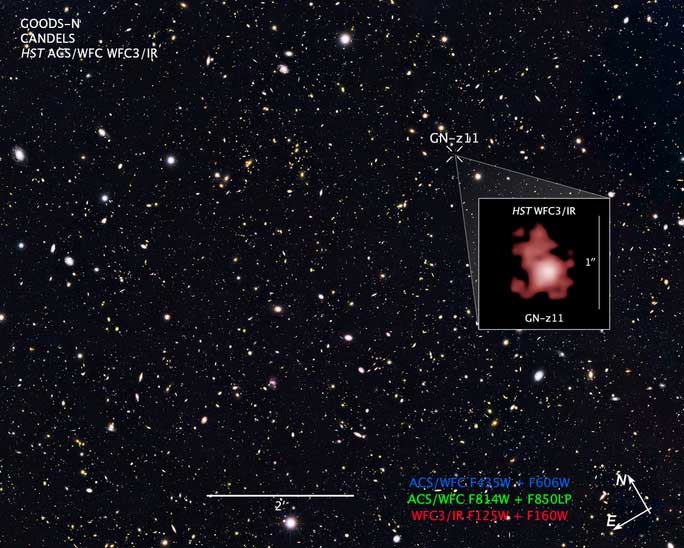The spectacular images from the James Webb Space Telescope, developed and operated by NASA, have revealed a hidden “monster cluster” in the early universe, showcasing “superstars” never before seen in any previous data.
“Monster cluster” formed just a few hundred million years after the universe came into existence, and the images scientists are observing are also “time-traveling” images from that primordial world, as the light took 13.4 billion years to reach the telescope orbiting Earth.

Image of the parent galaxy (red) of the mysterious blue monster cluster in data from the Hubble Space Telescope. James Webb has better visibility and thus discovered the “treasures” within this distant object – (Photo: NASA)
These are “superstars” beyond imagination, larger and hotter than any blue star (the hottest type of star) known to humanity.
In comparison to the Sun – a G-type yellow star, which has a slightly “below average” temperature – these monsters have masses ranging from 5,000 to 10,000 times greater. They also reach temperatures of 75 million degrees Celsius at their cores, compared to the Sun’s core temperature of 15 million degrees Celsius.
However, despite their frightening size and temperature, these monsters are very elusive because they have a very short lifespan.
A team of scientists led by Professor of Astronomy Corinne Charbonnel from the University of Geneva (Switzerland) has discovered signs of this monster cluster in James Webb’s data.
These monsters gather into globular clusters, with each cluster containing up to 1 million stars that formed together as early as 440 million years after the Big Bang that birthed the universe. Globular clusters are a structure that has been observed many times before, but such ancient globular clusters and the type of superstar they host have never been documented.
To locate these monsters, the research team utilized the infrared data from James Webb, digging deep into the light from one of the most distant galaxies, Gn-Z11, located about 13.3 billion light-years away from us.
The images obtained depict the galaxy when it was only a few dozen million years old, making it an interesting site for hunting young star clusters. By gathering light from this ancient galaxy and analyzing it, the scientists captured distinctive chemical signatures of the aforementioned monster cluster.
This research has just been published in the scientific journal Astronomy and Astrophysics.


















































